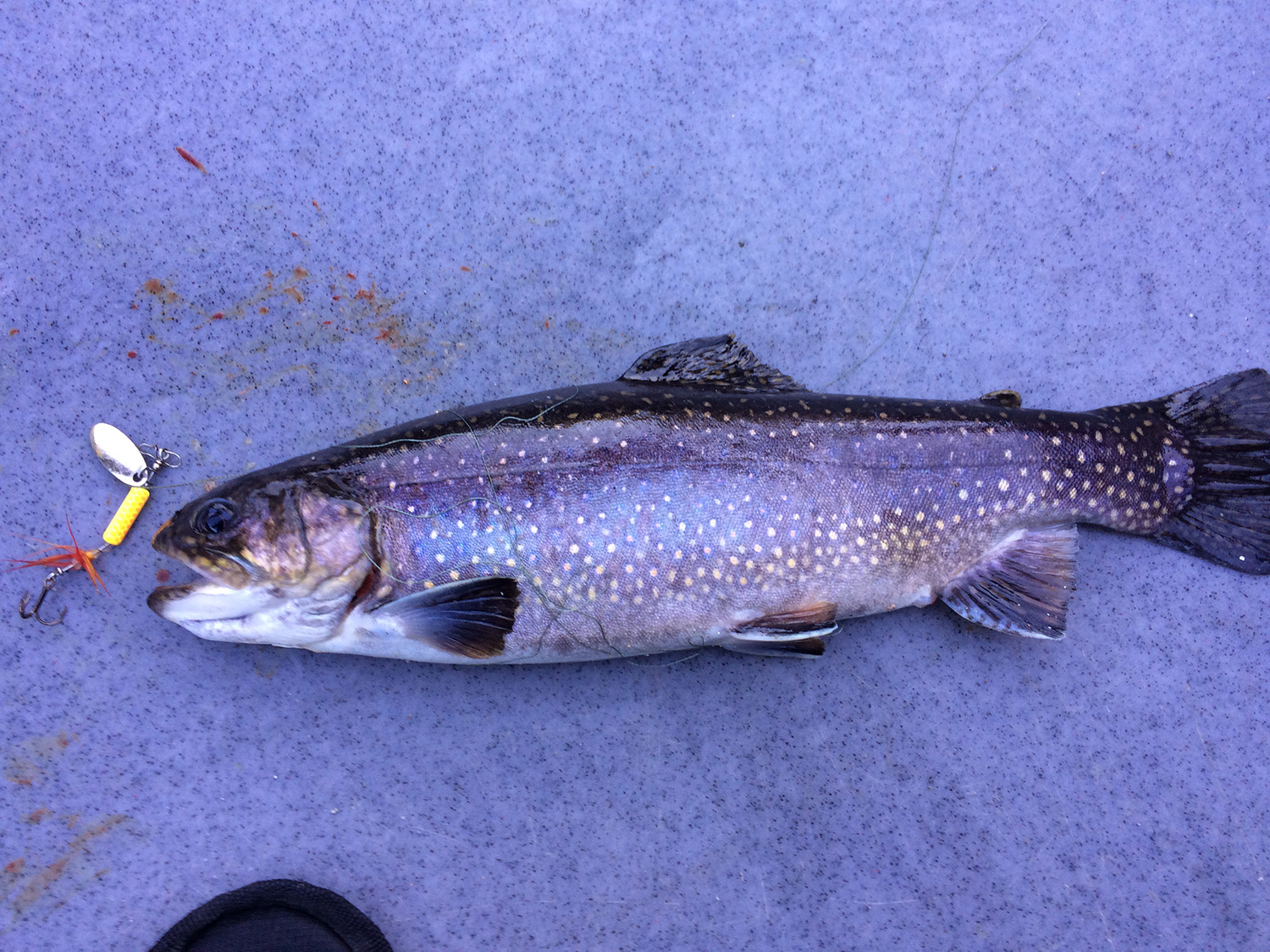Through these waning weeks of fall, breezes will get under woodpile tarps where last years split logs long ago faded grey; tall maples will go bare while nature pulls up her seasonal blanket of orange and reds. As we begin to store away rods reels and tackle, good swampers already have their beans tomatoes jams and jellies put up in their cellars. Pails of potatoes onions and garlic will be positioned in the coolest basement corners, away from boilers and lights. With that old fashioned sensible preparedness in mind, putting up fish can be just what we need to get us through the long winter.

brook trout are perfect for smoking
Some fish can be salted, some smoked, some frozen; success comes from proper handling right from the beginning. Not long ago, iron men sailed wooden ships to the Grand Banks in all weather; they pulled long oars, powering dories to haul nets bursting with cod which became a year round staple of dried fillets, full of calories and more than seventeen grams of protein in each ounce. Cod were headed and gutted on board, then typically salted and dried ashore on rocks or wooden racks. Rendering them hard like tack, salt preserved fillets for months of travel to markets throughout Europe Spain, Italy and many southern islands. Today, you can buy kitzy wooden boxes of baccalà, as the Italians would say, with small scroods wrapped in paper, or better, as whole fillets. Certainly you have seen “scrod” on a menu, baked or maybe fried. This is an obscure and misused term as scrod is not a fish at all, merely a lazy American adaptation of a now obsolete Dutch word, “scrood” or “scrud”, both of which translate loosely into a small cut or small pieces. Before the nineteen hundreds, you might have cooked a scrood, meaning a chunk of a large cod, remember those?, or a whole small fish. Buyer beware.

keep the smoker going all fall for feasts all winter
The Portuguese were major buyers of salt cod, calling it bacalhau and often more amorously, fiel amigo or “loyal friend”. In a nod to its limited contemporary appeal, markets typically carry salt cod only near holidays like Christmas and the traditional pre-celebration, La Vigilia or Feast of the Seven Fishes.
Guy Ippolito is the Seafood Manager at Dave’s Market in Wickford and has a lifetime of experience catching, cutting, selling and serving fish. As chief fishmonger, he explained the best way to bring back the flavors of salted Atlantic cod. “Using whole sides, ranging from one and a half to two pounds”, he said, “they need to be soaked for three days, changing the water two to three times per day to rehydrate the fish.” This also removes most of the salt. “You can bake it in marinara sauce, 375° for 20-25 mins, until the fish is flaky.” Or, he added, “You can make a salad with olive oil, black olives and celery.”
Baccala is not for everyone but with a solid recipe and lots of patience, smoking fish might be a tastier way to preserve many flavors of summer. Fishes rich in oils, like mackerels blues and herrings, are perfect for smoking, a process which begins with a good brine. Brining introduces salts herbs and flavors, often requiring up to 24 hours for the optimal soak. Recipes vary on ingredients and times but the next, most critical step, is drying on racks.
While it might seem counterintuitive to leave fresh fish out for 4 or more hours, their contact with air creates the pellicle, a thin layer of proteins which slowly generate on the surface. This pellicle will provide a surface for smoke to adhere to while helping keep moisture in as the fish heats. Woods for smoking vary by recipe but generally, apple, hickory or other hard woods work fine once thoroughly soaked in water. Most smoked fishes are good for a few weeks in the icebox so they won’t get you through the winter but they will remind you of those explosive blitzes and great fights from last season.
Freezing is likely your best option for feeding the family in January. Best practice when you catch is to leave the fish as is after filleting; washing with fresh water can introduce contaminating bacteria. Guy recommends patting them dry and tightly wrapping the fillets in plastic wrap before sealing them tightly in freezer bags. Vacuum sealers are a great help but as is true with much of life, you get what you pay for. If you opt for the sale item that seems suspiciously inexpensive, you may find later that air is not totally removed from all spaces and tiny pockets left around uneven fish, which means it’s pretty useless.
Shellfish are great candidates for freezing and can be frozen fresh or cooked. On that cold February night when the cupboards are a little thin, adding a container of littlenecks to a pile of pasta and Russian red garlic will take you right back to when you dug them out of the salt pond. Guy reminded that first, of course, you need to shuck them and save all the salty liquor. If you decide to cook first, make sure they are totally cooled before freezing. Those plastic bags work well but so do disposable containers from yogurt or the olive bar. Give them a good shot of plastic wrap on top under the lid and you’re good to go.
If all that plastic is too much for a real swamper, clams can be frozen in glass Mason jars but as a bit of air gets left on top, they won’t survive as long in the freezer. You could always throw a little piece of plastic wrap on top.
Salted smoked or frozen, seafood can be put up, ready for you to get everyone around your table passing warm bowls heaped with fish and shellfish, before settling in to tell a few last-season tales, all through the long winter.





0 Comments